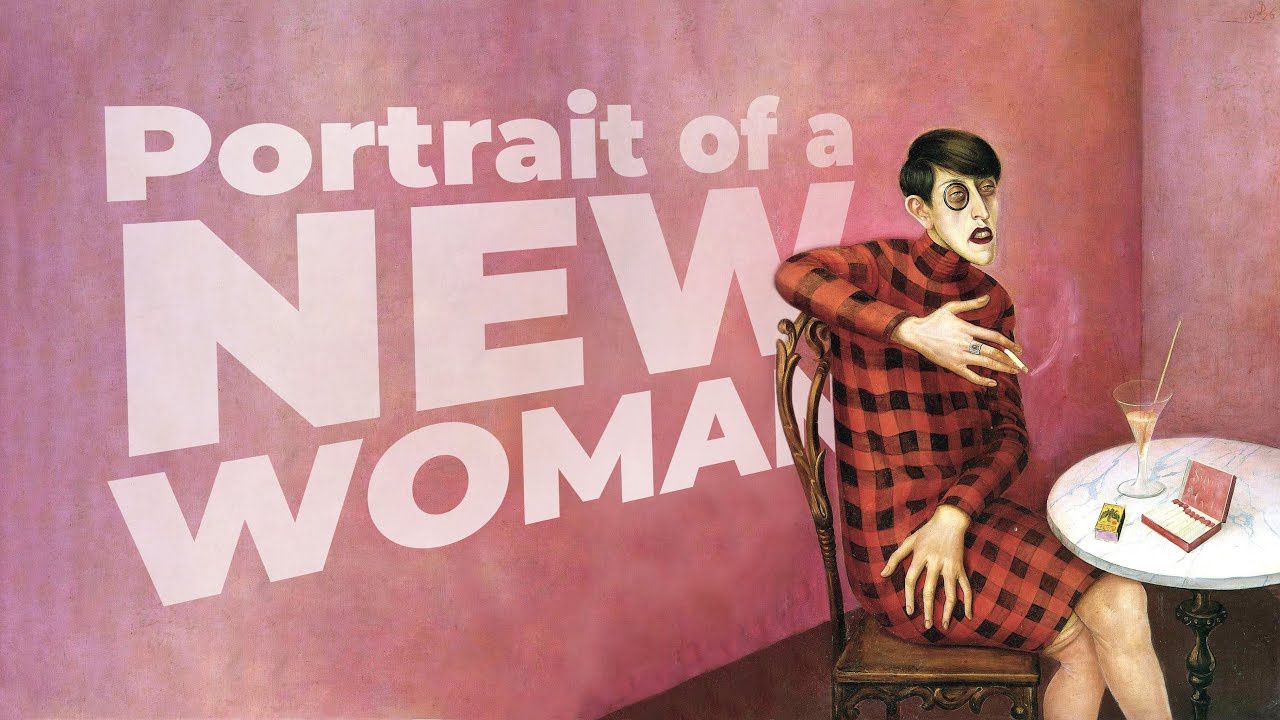The embodiment of the new female image: Who is Sylvia Von Harden?
Sylvia Von Harden is a German critic, journalist, and poet whose work is reflected by Otto Dix. According to many sources, Otto Dix saw Harden at the Romancisches in Berlin, where he went very often, and thought that he should paint his portrait because it reflected the lifestyle of those years.

The New Objectivists aimed to describe society and its time in an objective way. One of the pioneers of the movement is Otto Dix.
Sylvia von Harden (March 28, 1894 – June 4, 1963), also called Sylvia von Halle, was a German journalist and poet. During her career as a journalist, she wrote for many newspapers in Germany and England. She is perhaps best known as the subject of a painting by Otto Dix.
"Portrait of a Journalist: Sylvia von Harden", drawn by Otto Dix in 1926, is one of the artist's most famous paintings. In front of a candy pink wall; We see a not-so-cute female figure with short cropped hair, a long face, a long nose, and red lipstick-stained lips. The woman's scalloped fingers are particularly striking. A cigarette in his hand, and a cocktail in front of him.
It is possible to say that the female figure in the work reflects the newly created woman type of the period: The image of the "New Woman", which was gradually rising in Germany in the 1920s after World War I. This new image has transformed the place of women in German society until that day; It reflects the idea of a “career-oriented, strong, and independent woman”. According to this new understanding, while a woman can exist in social life as she wishes, she does not need someone to accompany her. This is why we try to create the impression that the woman in the portrait is sipping her cocktail alone or smoking a cigarette on her own.
What is at the forefront is neither the aesthetic body lines of the woman, nor her femininity, nor her appearance; In our opinion, what is underlined in the portrait is that the only thing needed for the woman to express herself freely and continue her existence as she wishes is her mind.
It is also known that the single-glass eyeglasses drawn on the woman's eye in the portrait were mostly used by men at that time. Based on all these reasons, we can say that this newly created female image is a bit 'masculine'.
So who is the woman in the portrait, she is a German poet. Rumor has it that Dix sees Sylvia von Harden on the street one day and tells her that she must paint her portrait because it represents an entire era. The work, which we can call close to the caricature, has been of great importance in the art world since the time it was created, as it is outside of the usual portraiture.
Who is Otto Dix?
Born in Untermhaus in 1891, Dix's interest in art starts during his childhood. He started to put his passion into practice, between 1906 and 1910, when he was an apprentice to the painter Carl Senff. Dix, who worked mostly on landscape paintings during these years, entered the Dresden Academy of Fine Arts in 1910.
Wilhelm Heinrich Otto Dix (2 December 1891 – 25 July 1969) was a German painter and printmaker, noted for his ruthless and harshly realistic depictions of German society during the Weimar Republic and the brutality of war. Along with George Grosz and Max Beckmann, he is widely considered one of the most important artists of the Neue Sachlichkeit.
In Otto Dix's work, we see the effects of the expressionist movement since 1919. George Grosz, whom he met in 1920, had a great influence on his life and work. He exhibits his works reflecting the Dada movement, created with the influence of Grosz, at the first Dada Festival in Berlind.
Otto Dix's paintings start to have extremely realistic features in 1924. In this, the impact of World War I on Dix is undeniable. So much so that in the artist's painting called Trench (1923), it is possible to see the bodies of soldiers with their organs separated from each other.
When we arrive in 1925, we see Otto Dix participating in the New Objectivity exhibition opened in Mannheim. Painters such as George Grosz, Max Beckmann, Heinrich Maria Davringhausen, Karl Hubbuch, and Rudolf Schlichter are among the other names in the exhibition.
